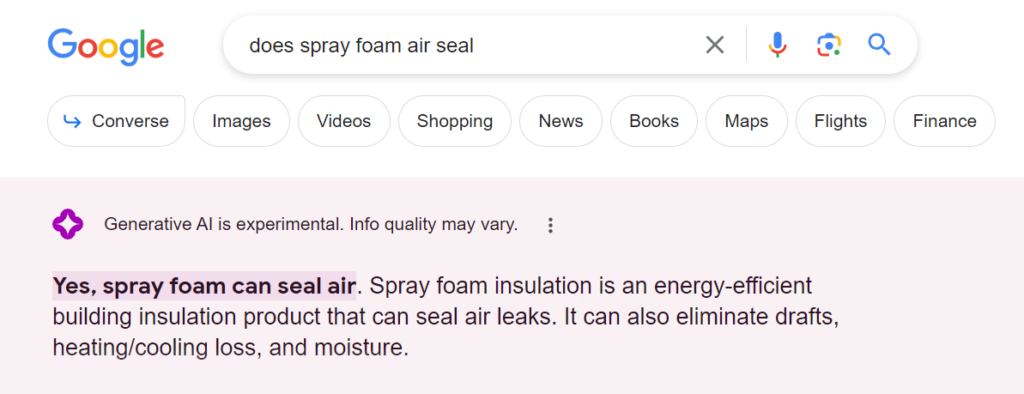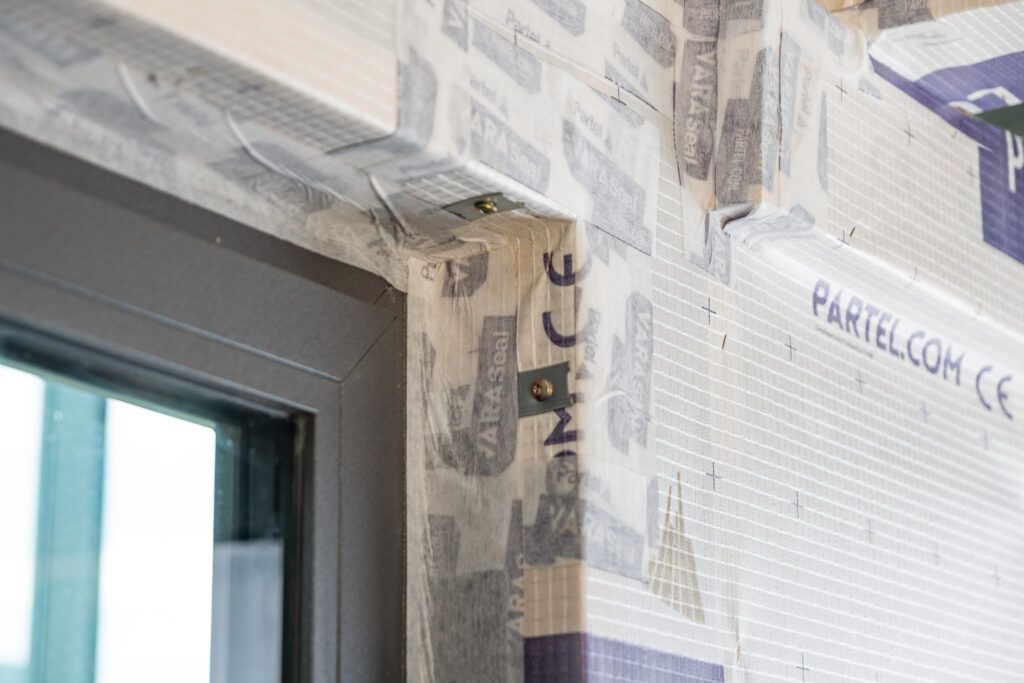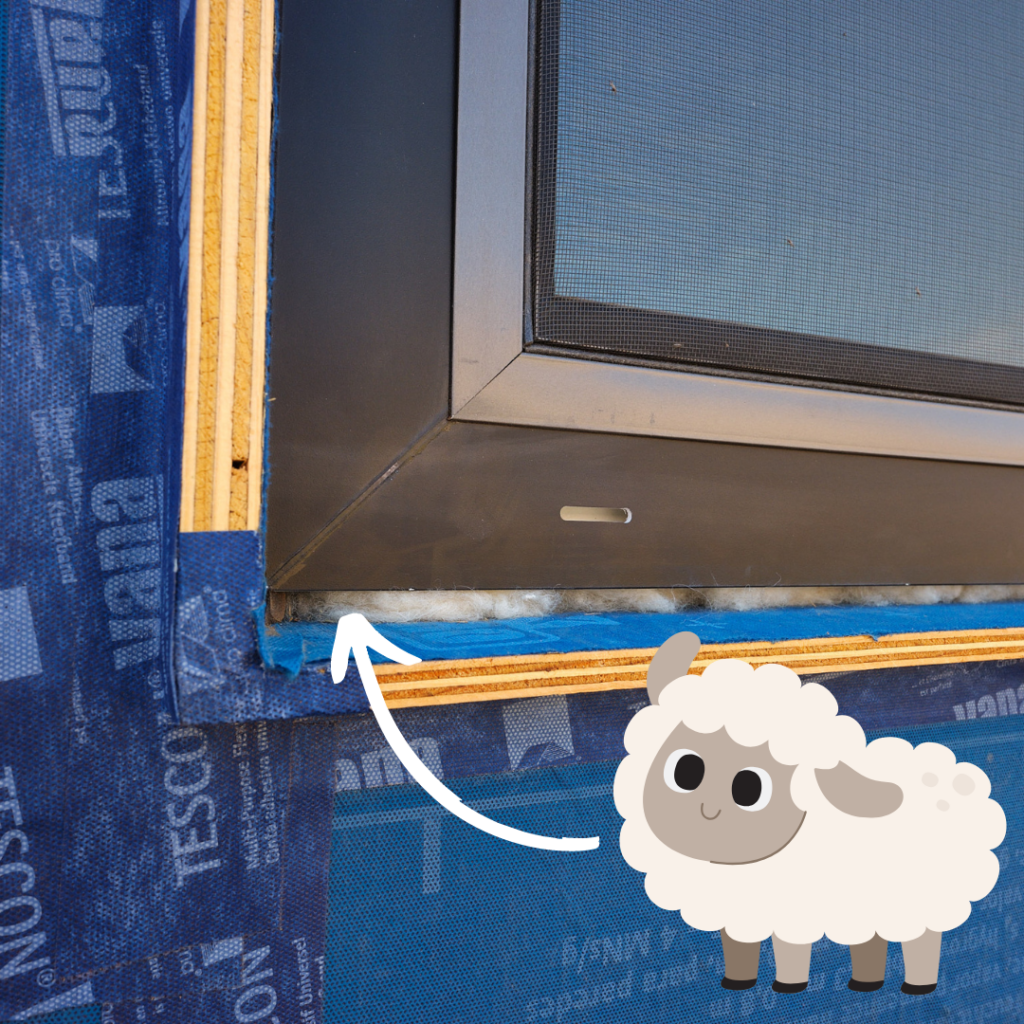If you are using spray foam as an air seal for your home, you will have problems down the road. Spray foam should never be confused with a durable air seal. This of course runs counter to all the marketing messages we get from the foam manufacturers and installers. Indeed a simple Google search shows this :

Don’t Believe the Hype
The products themselves are often referred to as “sealants” which would make you think it’s insulating and sealing… truly a magical product!
The reality is that spray foam is a widely used insulator in today’s building environment. It’s abundant, lots of people claim to know how to install it, and perhaps most importantly, it can be installed very quickly so it’s On to the Next Job!
As we’ve written in the past, we have lots of issues with foam but we understand that many folks will choose to use it given its convenience. However, we do want to set the record straight on the common claim that it is an air seal.
Spray Foam Does Not an Air Seal Make
Let’s start with the basics. Air and moisture will inevitably find their way into your walls. Even homes built to a Passive House standard will experience some degree of “infiltration”. When moisture levels expand or contract, the wood framing of a typical home will move. This makes your wall a “dynamic environment”. Now if we decide to insulate and seal that wall, we need materials that can work in that environment… materials that can adapt and maintain performance, materials that can manage moisture. This is where spray foam falls woefully short.
Once installed foam needs to cure and once done curing, the foam sets up with a brittle adhesion to whatever it was sprayed onto. The material itself becomes hard which enables the wasteful shaving you’ll see installers do when they overfill a cavity. All of this material transformation includes some degree of shrinkage and this is where you can first observe an air seal claim falling apart. See below:

The bigger issue is what happens over time. Regardless of where it is applied (in wall cavities, around windows, rim joists) foam does not have the flexibility to dynamically respond to changing air and moisture levels. This can cause the foam to pull away from framing.
This is why spray foam cannot be considered a “durable air seal”. You may be able to pass the IECC blower door test with foam right after construction but if it’s your only air barrier, it will not stand the test of time.
What is a Durable Airtight Material?
Luckily there are a lot of products, new and not-so-new, available to us that are durable air seals. The tapes and membranes space is filled with amazing products that can be used across a variety of applications and most of them are DIY-friendly (not just the domain of high-performance builders). Partel and475 High Performance Building Supply are two companies that provide all the technical solutions for continuous air barriers including vapor smart membranes, penetration sealing products and acrylic adhesive tapes.

In addition to new products, some traditional building materials are considered durably airtight. These include internal plaster, glued plywood, OSB and CLT as well as concrete and glass. So when constructing your continuous airtight layer, give these materials their proper credit!
(What’s not a durable air seal? Solid wood, drywall, taped rigid insulation and of course spray foam)
A Specific Example – Window & Door Insulation
The spray foam industry has excellently promoted their product as the ultimate window and door insulation AND sealant. The typical use of foam would be between the jam and framing of a window. It’s a small space that needs to be insulated and air-sealed. Just stick some foam in there and voila you’re done… or not. A proper way to address this space would be to add Havelock Wool and then apply one of the tapes offered by Partel or Pro-Clima. That approach could be considered a best practice. There are other options such as backer rod for example.

We hope to dispel the myth that foam is a one-stop shop for insulating and sealing around windows. We are biased towards wool of course, but for all the right reasons.
Addendum: Air Seal and Insulate
As we’ve written before, air is the second most important thing to control when building a home (after bulk water). Without proper air sealing, you cannot properly manage vapor or thermal transfer. So once you have your air sealing plan in place, then you can move on to insulation (thermal transfer). An air-tight, vapor variable, insulated wall assembly can include a wide combination of materials and products. A standard wall may have exterior insulation, sheathing as an air barrier, cavity insulation, and then drywall.. Or perhaps a vapor variable air-tight membrane is used inboard of the insulation. A ceiling may sit under an unconditioned attic insulated with blown-in insulation and sealed off with a smart vapor barrier on the underside of truss chords. Regardless of assembly construction, you do need to address the fundamentals of how to properly control for air before attending to thermal transfer.

I really like your product and am look for an opportunity to try it, though like most modern products, it is expensive.
My concern is for retrofit- it is difficult at best to air seal an older home. Foam is used in many places because these spaces are inaccessible.
My favorite is latex foam, it doesn’t expand much and isn’t cheap for the amount of coverage but it is very flexible and sticky where other foams are hard and crack.